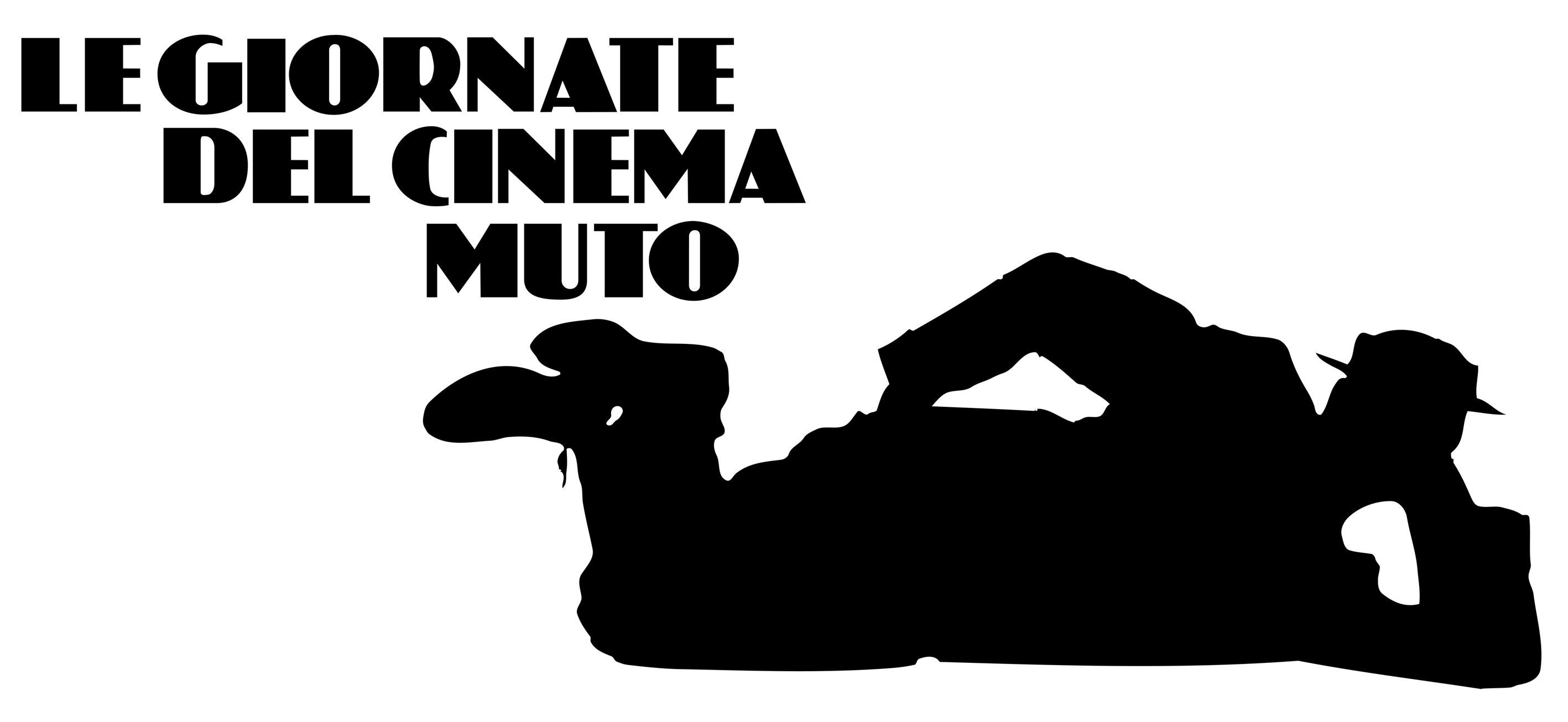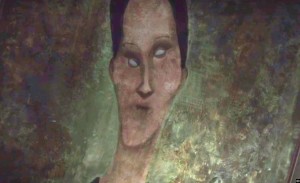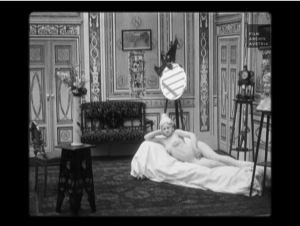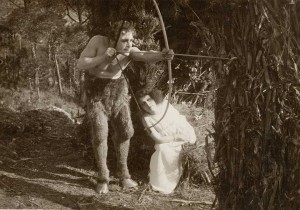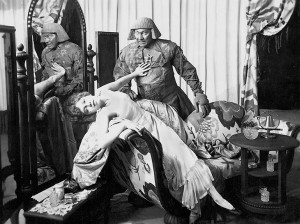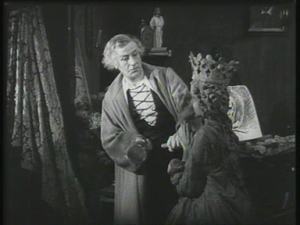Those of us who recently joined the elated masses in movie palaces to behold the sight of a magical clown dancing, prancing, and biting his way about the silver screen might have noticed that the child-devouring jester had a few familiar tricks up his sleeve. As the manic oeuvres of fellow cinematic fools from Georges Méliès to Cretinetti have shown us, “clowning around” is not always without visceral consequences, and, indeed, often more effective that way. Pennywise’s balloon art was surely bland at best, but in one of the film’s more haunting turns to nostalgia the clown brings a painting to life. It is the portrait of a woman, painted by an artist who might have been Modigliani’s evil twin, and when the picture falls from the wall to hit the floor face down an overturned canvas reveals that she has left the painting and is ready to menace our juvenile protagonist in an extra dimension.
The artwork come to life is not a motif that is at home solely in the realms of the horror or trick film, populated as they are by animated paintings and statuary, but one that permeates cultural expressions from ancient Greek and Roman myth to early cinema and beyond. I must admit here to being more than a little preoccupied with these metamorphoses, having worked on a project that set out to map the visualization of visual arts in film with Steven Jacobs, Susan Felleman, and Lisa Colpaert; among others, this has resulted in the co-authored and freshly minted Screening Statues: Sculpture and Cinema, in which we trace statuary motifs through film history from the eroticized tableaux vivants of the Austrian Saturn film company’s nudie cuties by Johann Schwarzer to deadly cases of mistaken identity in the wax museum horror film and experiments in expanded cinema.
Working from an ever-expanding list of over a thousand entries, I can safely say that once you start paying attention to them, you’ll notice cinematic representations of art, artists, and artistic metamorphoses everywhere. The cinema seems especially adept at fostering the colorful myths of the artist that were first propagated on the page, for they are usually made up of impulsive passions and dramatic twists (e.g. Michelangelo, Van Gogh, Rodin) and the camera is nothing short of enchanted in its possibilities to bring to life a flat canvas or a cold marble, highlighting minute details to show us works in ways we would otherwise never be able to see them and breathing life into inert matter through double exposures, stop-action, and other devilish trickery. In the case of the latter, the camera plays Venus to Pygmalion’s Galatea, so it should come as no surprise that the myth of Pygmalion haunts much of cinema’s living statuary; for instance in the wonderful Italian film Il Mistero di Galatea (Giulio Aristide Sartorio, 1918, thanks to Nando Gizzi for bringing this film to my attention).
Let us look ahead as well to the flickering pictures that will soon grace the spacious proscenium of the Teatro Verdi during the Giornate del Cinema Muto, or the Pordenone Silent Film Festival. Valentine Robert’s program of tableau vivant films (showing 5 October) should raise a few eyebrows: as a performative art form the tableau vivant is a corporeal and three-dimensional attempt to recreate paintings or statuary – whether solo or ensemble; whitewashed, coppered, marbled, costumed, or nude – and the cinematic recording and adaptation of acts that seek to mimic stasis adds a thick layer of tongue-in-cheek “meta” to the metamorphoses we are bound to see.
We will see statuary of more biblical proportions when looking at what remains of the first part of the Der Golem trilogy (Paul Wegener and Henrik Galeen, 1915, showing 5 October). In terms of longevity, the myth of the Golem can contend with Pygmalion, referring as it does to a biblical reference made in Psalms 139:16 wherein “golem” refers to Adam as a piece of clay yet unfinished by the sculpting deity; it would translate itself into the Talmud and was most lastingly picked up in the legend of sixteenth-century Rabbi Loew of Prague, who was said to have created a golem to defend the Prague ghetto against anti-Semitic attacks.
Should we not be content with religion we can turn back to myth with Febo Mari’s Fauno (1917, playing 1 October). The film tackles the prototypical relationship between the older male sculptor and the young female model through the unusual prism of a third male party: a life-sized sculpture of a mythological faun (half man, half goat) that was made expressly for the film by Giovanni Riva and modeled for by Mari. The faun comes to life to console the young model when she finds out that the sculptor is seeing someone else, leading to a sensual love triangle forged between flesh and stone.
In a final example, then, we see another story of an unhappy relationship between an older male sculptor and his younger model in Victor Sjöström’s Renaissance period piece Vem dömer (Love’s Crucible/Mortal Clay, 1922 – playing 3 October), analyzed by me for the occasion of Kosmorama’s special issue that accompanies Casper Tybjerg and Magnus Rosborn’s program the Swedish Challenge. There are bound to be more examples of these artistic representations and metamorphoses rearing their heads in the dark of the Teatro Verdi and plenty more in the first decades of cinema’s existence. These examples are valuable because they can teach us about the early twentieth-century myths, preconceptions, and biases with regard to what constituted “art” (“good” or “bad” art in particular) and what it meant to live the life of an “artist” (starving, womanizing, mad, or all three?). Throughout film history, furthermore, artistic metamorphoses uniquely reflect the transformative possibilities of the medium in all its mechanical glory. Buone Giornate!

